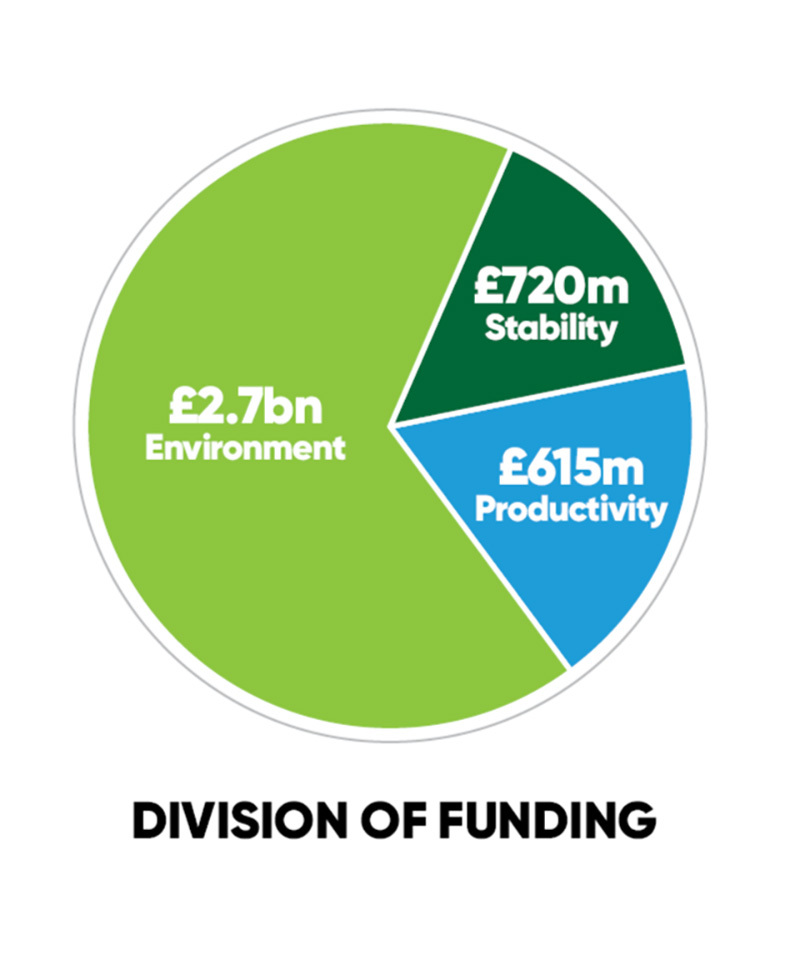This budget for England would support the delivery of the environmental goals outlined in the government’s Environmental Improvement Plan (EIP) and those proposed by the Climate Change Committee.
The budget would contribute:
- £1.1bn towards the costs of delivering the thriving plants and wildlife goal, which includes habitat creation and restoration, as well as species-friendly land management and supporting threatened species;
- £357m towards the mitigating and adapting to climate change goal, including woodland creation and maintenance, as well as peatland restoration and maintenance, an increase in bioenergy crops and agroforestry growth.
Many of the outcomes generated from funding these goals will also deliver in part on the remaining goals, where the budget would contribute an additional:
- £342m for the using resources from nature sustainably goal with a focus on sustainable soil management;
- £314m for the clean air goal with a focus on reducing ammonia emissions through low input grass and nutrient management;
- £169m for the managing exposure to chemicals goal, focusing on minimising the risks and impacts of pesticides through integrated pest management (IPM) practices;
- £36m for the clean and plentiful water goal, with a focus on reducing nitrogen, phosphorus and sediment pollution through additional buffer strips;
- £23m for the enhanced beauty, heritage, and engagement with the natural environment goal, supporting Farming in Protected Landscapes; and
- £15m for the reduced risk of harm from environmental hazards goal with a focus on additional long-term nature-based solutions to flooding.
This covers the costs expected to be incurred by farmers delivering the multiple environmental outcomes.
In addition, the £2.7bn includes an incentive payment to farmers to encourage the significant increase in uptake of environmental schemes required, and to recognise the unique risks and challenges of engaging in new longer-term environmental schemes.
Driving high quality and resilient outcomes
Including an incentive payment also allows us to factor in the value of multiple environmental outcomes that farmers are expected to deliver to meet the government’s, and our, environmental ambitions.
This will drive high quality and resilient outcomes at scale.

The incentive payment required in practice may vary depending on the design of environmental schemes, including scheme accessibility, length of commitment, perceived compliance risk and compatibility with farming systems.
However, the modelled payment serves as a broad indication of what is needed to drive unprecedented levels of uptake in government environmental scheme delivery.
Targeted support for horticulture and poultry
As with the productivity cornerstone, it is recognised that additional targeted support for the horticulture and poultry sectors will be required, given their unique production systems and capacity to deliver for the environment.
More on the division of funding
*The Andersons Centre provides industry-leading business advice, research and analysis to the agricultural, rural and food sectors across the UK


